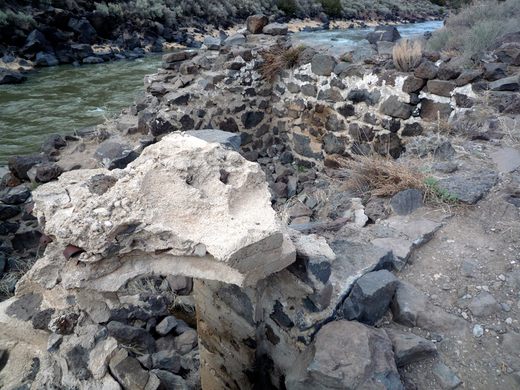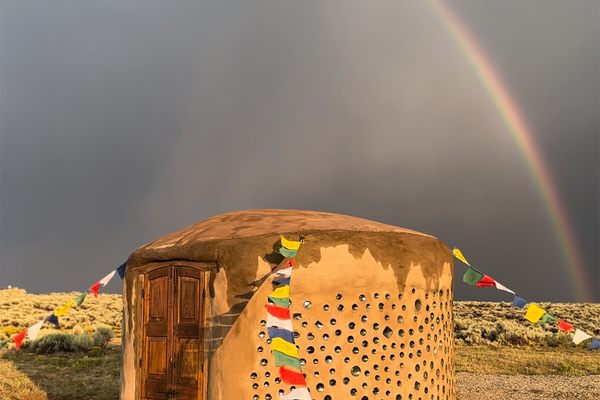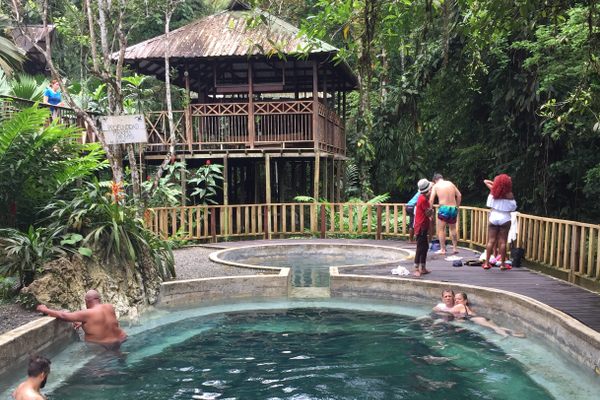Manby Hot Springs
Secluded springs in the Rio Grande Gorge offer hot bathing beside the haunted ruins of a stagecoach stop.
While there are other thermal pools near the John Dunn Bridge near Arroyo Hondo, New Mexico, Manby Hot Springs offers the intrepid a great reward. At the end of a rigorous two-mile hike of scrambles and uneven terrain along the base of the Rio Grande Gorge, three stone pools of various temperatures offer bathers their pool of choice. The pool nearest the river is the warmest, at about 100 degrees Fahrenheit.
The site was also previously used as a stagecoach stop along the Rio Grande for commercial vessels. That is why Manby Hot Springs is sometimes called Stagecoach Hot Springs.
The springs may be haunted, as Arthur Rockford Manby, the namesake of the springs, was found decapitated in his home in Taos in 1929. His spirit is said to stalk the area, and his biographer said he “lied, schemed, and stole” to procure the land for himself. All that was built was a bathhouse and a few cabins that were destroyed in a 1927 flood. The ruins of the bathhouse are still beside the existing pools.
Prior to 2021, the springs were accessible by hiking a short .10-mile path descending into the Rio Grande gorge from a now-private property along Tune Road. Now the property owners have prohibited the public from using the trail to access the springs, so the public must use the “goat trail” or “fisherman’s trail” along the river, or take a boat to reach the springs.
Know Before You Go
The hike is two miles one way, or four miles total (out and back). Please refer to a guide (such as AllTrails) for trail guidance and bring a map. Signs posted on the trail indicate that the hiker(s) must have route-finding skills as the trail is unimproved and not maintained by the Park Service or Forest Service.
The final road to down to the river to meet the trailhead is rougher than the roads that descend into the gorge. It may be best to park near the John Dunn Bridge (on the West side) and walk back across the bridge to get to the trailhead area unless you have a AWD or 4WD vehicle with high clearance.
The trail is not level and consists of a handful of scrambling zones up and around large rocks. Some bouldering and/or rock climbing skills may be required.
In the summer, the trail may be unpassable due to high river levels, poison ivy/overgrowth, and other hazards such as rock falls.
While the hike is best accomplished in the winter (who wants to get in hot springs in the summer after a long hike?!), the pools may be inaccessible at any time due to high river levels. It's best to check the river level with the U.S. Geological Survey before embarking on the hike. The springs are only a few feet above the typical water level, so if the stage exceeds a few feet, the springs are likely submerged.
















Follow us on Twitter to get the latest on the world's hidden wonders.
Like us on Facebook to get the latest on the world's hidden wonders.
Follow us on Twitter Like us on Facebook